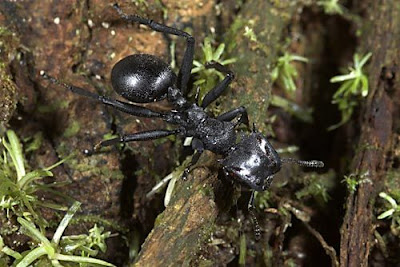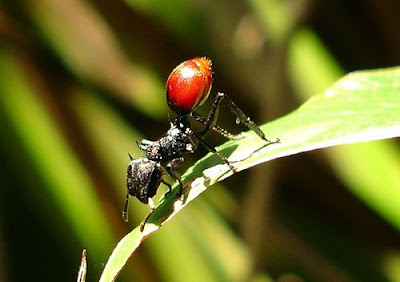Saturday, 19 March 2011
Doctor Who: Time, Part 1 and Part 2 - Red Nose Day 2011 - BBC Comic Relief Night
Just in case you missed it - or you were not in the UK, here is another chance to see both parts of the BBC TV Comic Relief Doctor Who Special that was broadcast on March 18 2011. The episode is called Time and the Doctor and his travelling companions, Amy and Rory, encounter a small problem. The Tardis has materialised inside itself. Needless to say that this leads to some strange goings on. Of course, as it was for Comic Relief, the yearly BBC TV telethon then there is more than the usual gags (visual and otherwise) thrown in for good measure, some which are a little more adult than one would usually expect!
Until Season six begins to air in a few weeks, this is all we are getting! A reminder, though, as this was created for a charity event, please donate by going to the and parting with your cash!
PART TWO
Thursday, 17 March 2011
When people start to blog they often do not go in to it with their eyes open – at least in terms of the money that they will make. There is an idea in their mind of the dollars (or whatever currency!) rolling in with little effort and the wakeup call that usually happens a few months later leads many people to give up blogging altogether.
What is needed, more often than not, is a diversification in terms of the revenue that you get from your blog. I have now been working with for several months and have found it a brilliant way to increase my revenue for my blog without losing the openness and honesty that I need for my readership. In fact their code of conduct explicitly encourages (if not demands!) that bloggers remain themselves when it comes to ebuzzing campaigns. You can read more at their if you are interested.
As a blogger with several (successful) years in the blogosphere under my belt I can thoroughly recommend both ebuzzing and the methods it uses. I would like to see a lot more supermarkets take advantage of this sort of advertising route. After all, the majority of people are now online and more and more people are doing their food and household shopping on line.
As an eco friendly guy I long ago realised that shopping and delivery online was a much better way of me to help reduce my carbon footprint. It was one of the only things that I used my car for and getting all the heavy things delivered (at the same time as lots of other deliveries) means that the gas used in much reduced overall.
In other words, advertising by supermarkets to increase the number of people who shop online could significantly reduce the carbon footprint of thousands of people who would otherwise be the only person in a gas guzzling car, wasting time going to do the family shop.
Tuesday, 15 March 2011
The Darth Vader Ant with Superhero Gliding Skills
Their skills eluded observation until early this century, but you can add another animal on to the list of those who have developed the ability to glide. Joining snakes, squirrels, frogs and lizards with those superhero-like gliding skills is a species of ant.
 And what an Ant! The Darth Vader of the entire insect world, Cephalotes atratus, inhabits the canopy of the tropical forest systems of Central and South America. That’s a long way up and if an ant was to fall it would lead to almost certain death on the floor of the forest. Either that or a trip that would make The Incredible Journey look like a walk in the park, but one which would probably be impossible due to the lack of chemical trails to guide the ant back home.
And what an Ant! The Darth Vader of the entire insect world, Cephalotes atratus, inhabits the canopy of the tropical forest systems of Central and South America. That’s a long way up and if an ant was to fall it would lead to almost certain death on the floor of the forest. Either that or a trip that would make The Incredible Journey look like a walk in the park, but one which would probably be impossible due to the lack of chemical trails to guide the ant back home.
Luke, I am your father....
The ant is almost a centimeter long, which makes it larger than the ones we are used to in our gardens, and it has the sort of appearance that would make many a casual gardener run for the comfort of the house. With its spookily long hind legs it looks scary enough, but the flanged head shield gives it the look of a certain Jedi gone bad. One could almost expect it to hoarsely rasp the odd dark side aphorism. Yet it is probably these features which have evolved over time to enable the ant to glide.
Cephalotes atratus or the Gliding Ant has been known for a long time but their gliding ability was first noticed – in a kind of insect ecology Eureka moment by University of Texas Medical Department member Stephen P Yavoniak in 2004. While hanging around in the canopy waiting for mosquitoes to bite him (for research purposes rather than the fun of it) he brushed several dozen ants from him and noticed something odd.
Instead of falling randomly away from the tree the ants formed a mini cascade and landed right back on to the bark. Intrigued, he then painted the hind legs of some ants with white nail polish (perhaps part of the usual insect ecologist’s kit?). The ants were found to come at the tree backwards hit it and then hang on for dear life. While most ants were successful some would fall down the tree a little farther. A few would plummet down to the earth (seems a shame, but this is science).
Even more unbelievable, these gliding ants can turn through one hundred and eighty degrees in mid-air. By executing this hairpin turn while gliding (what the scientists call directed aerial descent) through the air they can have a second attempt at reaching the trunk of the tree again.
Further studies revealed more about this remarkable achievement of evolution. If the ants were simply to fall and simply keep their antennae crossed that they would land back on the branch, only five percent would do so. The gliding ant success rate, however, is a whopping eighty five percent.
The advantages of being able to do this are fairly obvious. The ants weigh so little that a gust of wind can blow them off the tree. Also, there are animals such as monkeys who may inadvertently knock them from the canopy. They may even fall off in the scramble for the next meal, such as the dung beetle above. Yet there is even evidence to suggest that the ants fling themselves off the branch in order to avoid predators. That is one confident ant.
There is a downside for the amazing gliding ant. It is prone to attack from a parasite, which transforms its abdomen in to something resembling a ripe berry. This change to its morphology is an intensely clever ploy by the nematode (roundworm) to make the ant an attractive snack for a berry eating bird. Thus the parasite gets to introduce itself to the bird. For which it is the most unpleasant demise, bird or ant, I will leave to you.
Saturday, 5 March 2011
Cats With Thumbs
One of the funniest ads on TV in the UK at the moment is Cats with Thumbs, which promotes the products of dairy company Cravendale – notably milk.
It supposes (through the bleary eyed imagination of a man taking his breakfast) that all that cats as a species have to do is wait until they develop thumbs, then nothing will stop them!
It makes change from zombies taking over the UK, I guess. This is more 28 Purrs Later, however. And of course, if you like your lolcats you will, quite possibly, enjoy this!













